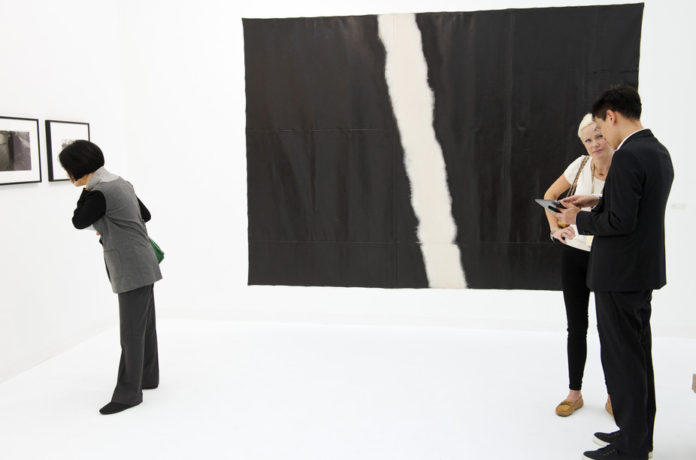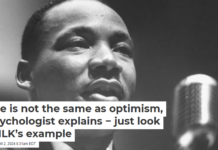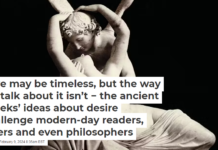
By Kate Symondson, King’s College London
One of the biggest international art fairs is back. And London’s Frieze isn’t just about selling contemporary art, it’s an annual exhibition that defines and showcases the international art scene of today. This year Frieze is bound to focus on the bizarre, and reviews have been full of the fair’s “nuclear soup” (made from radishes grown near Fukushima) and “a leopard skin Jimmy Nail artwork”.
It’s not only Frieze. This year has also blasted the abstract art of the past into our present – with major exhibitions on Klee, Matisse, Malevich, Mondrian, and Radical Geometry.
Why this sudden, convergent interest in the early years of abstraction? Perhaps the forces that originally drove artists and spectators to abstract art resonate with our own concerns today.
Trying to define the abstract
Defining abstract art is difficult. In its most extreme form – “pure abstraction”, as Mondrian called it – it is utterly devoid of reference to the natural, material world. But as the first flourish of abstraction (not to mention today’s resurgence) attests, the basic understanding of abstraction as the antithesis of the familiar and the real is woefully inadequate, and not especially helpful if we are to understand our connection to the original movement.

© State Tretyakov Gallery, Moscow
The early 20th century artists that we’ve conveniently bulked together as “abstract” shared no consensus over form, concept, or even what term to designate their ground-breaking works. Their paintings sprawl across a spectrum: ranging from familiar objects represented in a defamiliarised way (the cubists, for instance), to the total non-representation of pure, geometric abstraction (of, say Mondrian and Malevich). Some called abstract painting “concrete” (Arp and Kandinsky), and others, “non-figurative” (Mondrian), while the Guggenheim Foundation settled on “non-objective”.

Piet Mondrian, The Tree A c.1913.
© 2014 Mondrian/Holtzman Trust c/o HCR International USA
There was also no consensus over what it was that abstraction achieved or communicated. Amid the cacophony of contemporary voices attempting to answer this, German art historian Wilhelm Worringer’s resonated far, reaching British culture via TE Hulme’s lecture series of 1913-14. Worringer believed that the turn to abstraction articulated a desire (of some) to escape the “caprice and obscurity” of their disordered quotidian existence. By “wrest[ing] the object of the external world out of its natural context, out of the unending flux of being,” the abstract imposed order upon chaos. Worringer’s theory could describe the likes of Mondrian’s absolutist, purist abstraction, but it can hardly speak of the kaleidoscopic vision of the cubists. Nor does it reconcile with, say, Kandinsky’s belief that the “non-material” quality of his abstract form was imbued with a “spiritual perfume”, an essence of reality.
Diverse anxieties
So we still find ourselves no closer to a definition. In a recent guide to contemporary abstract painting, Bob Nickas argued that we ought to do away with “Abstraction with a capital A”. He reminded us that any definitive definition of abstraction – what form it takes, the effect it has – is too rigid for this rich, amorphous body of art. Just as the abstraction of the past can’t be understood in any singular way, our reignited interest in this past is the product of various forces. These are forces which, in many ways, correspond to the diverse anxieties and urges that first drove the movement.
Abstraction was (and is) “an art of individuals”, to borrow Wyndham Lewis’s phrase. Liberated from the constraints of “copying” the visible world, abstract form not only provided the artist with a new, ambiguous language with which to communicate. It also allowed a greater freedom of interpretation for the spectator. For Nicholas Serota, the director of the Tate, the joy of Matisse’s cut-outs is that every time you see them: “There is potential for reading them in a different way, for seeing them in a new light.”

Photograph by Linda Nylind. Courtesy of Linda Nylind/Frieze.
So perhaps abstraction is a celebration of the flux of our lives, evolving as we do, a measure and reflection of our ever-shifting selves. But it can also offer stasis, a moment of calm. It’s unburdened by reference to political and financial catastrophes; it’s an antidote to technology and the endless cascade of textureless mundanities captured by camera phones.
In its move away from figuration, abstraction thwarts the conventional language of painting. In lieu of recognisable objects, abstract images promote sensory experience over cerebral apprehension. While abstraction has often been accused of being anti-real, in many ways, it develops a new way of articulating reality, by enacting something of our experience of existence, rather than our rationalisation of it. As Nickas reasons:
If a representational picture offers an image of how the world looks, then doesn’t it fall to abstraction to provide us with an image of how the world feels?
Perhaps the most obvious reason for our celebration of the art of then can be found in our art now: the explosive proliferation of abstract paintings being made today. Pepe Karmel recently announced that “the golden age of abstraction is right now”. Frieze, it would appear, agrees (as any attempt to list this year’s cornucopia of abstract artists would decisively show). This ambiguous form is more amorphous, more sprawling, more exciting than ever; proof that what was begun in the past, is far from being over in our present.
![]()
Kate Symondson does not work for, consult to, own shares in or receive funding from any company or organisation that would benefit from this article, and has no relevant affiliations.
This article was originally published on The Conversation.
Read the original article.




















